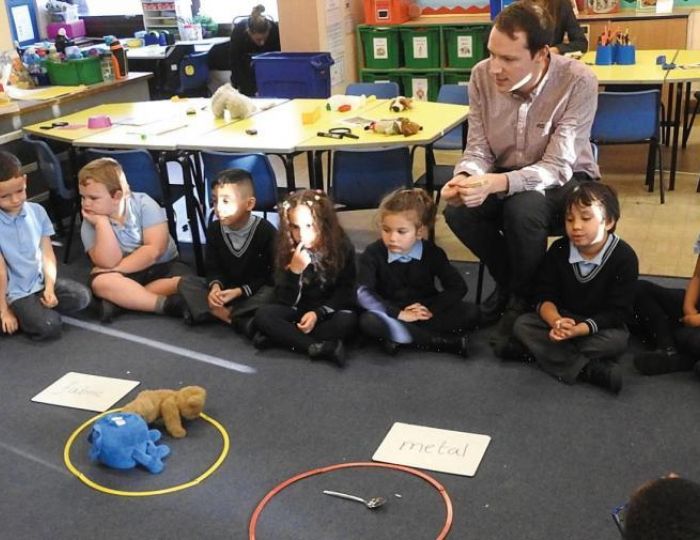Self-scrutiny is a good thing – especially when you can use it to accelerate school improvement and simultaneously help create the next generation of school leaders.
This two-handed approach to internal audit and review has become an important feature of life at Warrington Primary Academy Trust (WPAT) – a MAT comprising six primary schools and a teaching school situated in the north west. We developed STaR (Specialist Teacher Review) teams as a way of providing our schools with semiindependent, internal audits of teaching and learning practice to help us raise standards, share best practice and develop staff.
The fact that the STaR teams are led by teachers, rather than heads or members of SLT, is a deliberate choice. We wanted to move away from traditional peer-topeer school improvement models led by school leaders, partly because our heads were already busy attending to the demands of a rapidly expanding MAT and lacked the time to commit to regular auditing of our schools.
However, another, even more important reason was that this new type of approach would give our talented staff professional development opportunities they wouldn’t have been able to receive otherwise.
Helping schools develop
Each school in the MAT receives a termly visit from the STaR team, which is made up of teachers from across WPAT who have been trained by us to conduct audits of practice based on the Ofsted framework. To ensure objectivity, STaR team members will never audit their own school. This also affords more opportunities for WPAT staff to get involved and share their knowledge and skills across the trust.
Every STaR team includes at least two practitioners, who are appointed at the recommendation of their respective heads. One acts as the team lead, and will be responsible for coordinating the review and producing a report. STaR teams are also accompanied by a headteacher from a different WPAT school during visits, who will carry out quality assurance on the team’s report before it’s published. A copy of the final report will then be sent to the relevant school’s headteacher and local governing body, as well as the trust board.
During the audit visit, the team will observe lessons and talk to pupils. The areas they examine will include book scrutiny, monitoring of pupil behaviour, conversations with staff and examinations of the school’s pupil progress and methods of tracking.
It’s important to note that the STaR approach is centred on helping schools develop, rather than handing down judgements. Prior to an audit visit, the school will select a range of areas that it would like help with – perhaps preparing pupils for transition, or managing pupils’ attitudes to learning – in addition to the priority areas that form part of every audit.
Observing practice
For me, the STaR team approach works because it distributes good practice and responsibility for raising standards, beyond the duties and capacity of school leaders, while involving the wider staff team. It also helps to identify those staff members with the potential for further career development within our trust.
WPAT’s data manager, Vikki Lovato, has been instrumental in getting the STaR team system up and running. In her view, “It’s proved to be a very effective process – teachers who have already been on the other end of the experience know what to expect when it comes to playing their part in the audit teams.
“When they go out to review they know what they’re looking for, but they also get to see the practice that’s happening in another school. We may be a MAT, but our schools are all individual and have their own ways of doing things. Up to now, it’s been hard to see what happens in other schools, so it’s a good way of observing practice in another school that might not be approaching things in quite the same way. It’s a way of picking up good ideas.”
Katie Rowland, assistant head at the WPAT school Penketh Primary, believes the collaborative approach to auditing encouraged by the STaR team model has benefited the school in a number of ways: “We’ve developed much stronger working relationships with those schools we’ve reviewed, and have had opportunities to share practice and see what’s happening elsewhere in the trust,” she says. “It’s provided us with good professional development opportunities, and meant that we can play a part in helping all of our schools to standardise, and see what steps we need to take to continue improving across all phases.”
Improving the language
That said, we have needed to iron out one or two issues. One was the language used in the reports that STaR teams submit to the heads, which became one of the reasons behind the strengthening of the QA process. The practice of generating reports is also one that we’ve focused on during staff training. We’re still on a learning journey, and doubtless the approach we’re using will continue to improve as we go on. By the time we’ve completed our latest round of audits in autumn this year, the STaR teams will be operating at a very high standard.
The process of identifying staff members who can acquit themselves well as part of a STaR team remains ongoing. We’re always looking to identify new candidates, so that there’s a continual flow of colleagues coming onto the teams who can absorb and learn from the experience of established members. By building up a strong pool of people, we’ll hopefully never lose the expertise that we’re developing.
How it works
- Every STaR audit team is made up two teachers drawn from two other WPAT schools, and supported by a WPAT headteacher from a separate school who attends to quality assure the team’s report and be on hand to deal with any questions or concerns.
- While both team members observe lessons and scrutinise books, each has a distinct set of responsibilities during the one-day visits. One will chat to pupils and review safeguarding and behaviour, while the other speaks to staff and reviews current pupil progress and tracking.
- Once the evidence gathering has been completed – usually by lunchtime – the team will feed back to the head and then use the afternoon to draft their report. This is then QA checked by the attending headteacher, ahead of a final QA by myself and data manager Vikki Lovato. The report is then submitted to the school.
Louise Smith is the CEO of Warrington Primary Academy Trust – a MAT consisting of 6 primary schools in Warrington and Widnes










